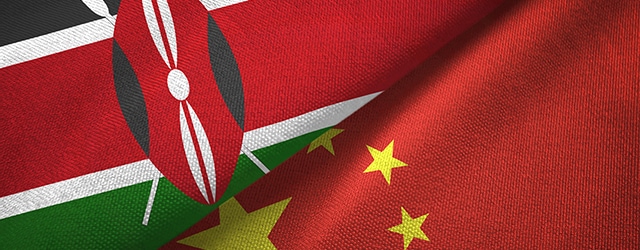China's rise is boosting the economies of African nations.

Kenya joined the ranks of Africa’s petroleum-exporting countries on August 26by shipping 250,000 barrels toChemChina in $12 million deal.The inaugural oil shipmentwas part of a pilot scheme between the Kenyan government and corporate partners including Africa Oil Corp, British oil explorer Tullow Oiland France’s Total SA. Kenya’slocal crude is consideredto be of thepremiumvariety because it is “sweet and light, among the best, due to its low sulphur content and density, a phenomenal thatusually makes itfetch a higherprice in the market place,” saysGerald Muriuki, a research analyst at Genghis Capital ltd., a Kenyan investment firm.
Tullow estimates that Kenya’s Turkana fields contain 560 million barrels of oil. But reaching full production potential—estimated at 100,000 barrels per day (bpd) by 2024—will require investments in infrastructure including drilling and pipelines.Kenya discovered commercial oil in 2012 in its Lokichar basin within Turkanaregion located in the northeastern part of the country.
While many Kenyans are celebrating their country’s entry into the world of oil producers alongside African nationssuch as Angola,Nigeria, Congo-Brazzaville, Equatorial Guinea, Egypt, Libya, Sudan, South Sudan, Gabon and South Africa, Muriuki is more cautious. As he put it:
“There is still a lot to be achieved before celebrations. For one, the reserves and production is very small before it coalesces around the 80,000-100,00bpd figures. Second, investors have to recoup their investments which run into billions of Kenya shillings. Third, the contentious issue of revenue-sharing between the local government where the oil is located and central government remains a sticking point. And fourth, the cost of transporting the oil, currently by road is bizarre. Also, with no local refinery available, the product will need to be shipped for refining, which means an extra cost.”
Kenyancivil society activists arequestioningthe secrecyof the Early Oil Pilot Scheme (EOPS) that details the transportation of stored crude oil drawn from the testing oil wells andthe cost of producing 2,000 barrels of oil per day over a two-year period including the production-sharing agreements signedwith partners.
“We note with deep concern that the government has adopted an attitude of non-disclosure,” said Charles Wanguhu, the Kenya Civil Society Platform on Oil and Gas co-coordinator.
China’s voracious demand for energy to fuel its booming economy has led it to seek oil supplies from Sudan, Chad, Nigeria, Angola, Algeria, Gabon, Equatorial Guinea and now, Kenya.
Once the largest oil exporter in Asia, China became a net importer of oil in 1993 and by 2045, China is projected to depend on imported oil for 45% of its energy needs. Locking in energy supplies from relatively low-cost African or Middle Eastern sources is critical to sustaining China’s rise as an economic global powerhouse, experts say.
Over the past two decades, China’s development banks loaned billions of dollars to Africa’s oil-producing countries at a time when other sources of financing were scarce or non-existent.“As a result, China has become the region’s largest creditor, accounting for 14% of sub-Saharan Africa’s total debt stock,” according to Foresight Africa 2018. For example, the volume of Chinese loans to the Kenyan government is six times larger than that of France, the country’s second-largest creditor according to the Brookings Institution, a non-profit think tank based in Washington, D.C.
However, some aspects of China’sdealings with African nations have set off alarm bells within the international community regarding the absence of transparency and accountability. African nations that have a history of endemic corruption may welcome Chinese investment in the short run but become destabilized in the long run as social problems like income inequality get worse.



